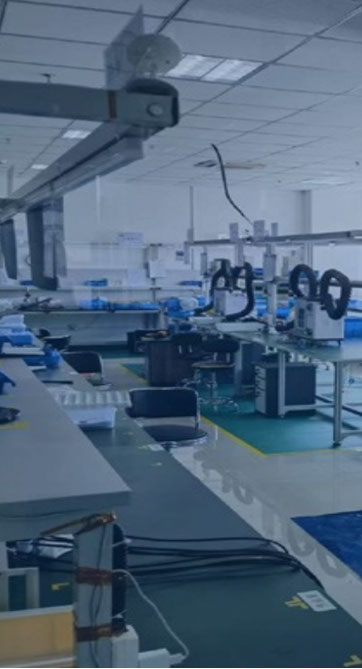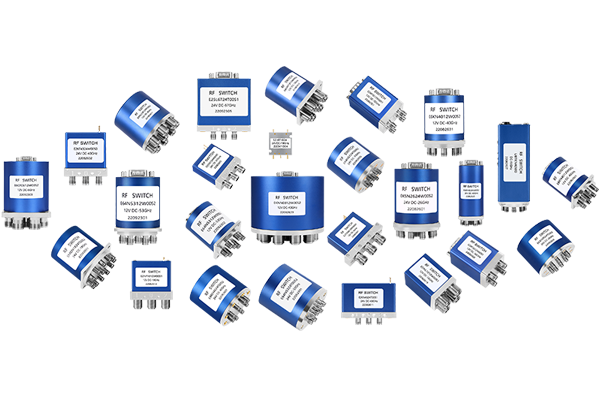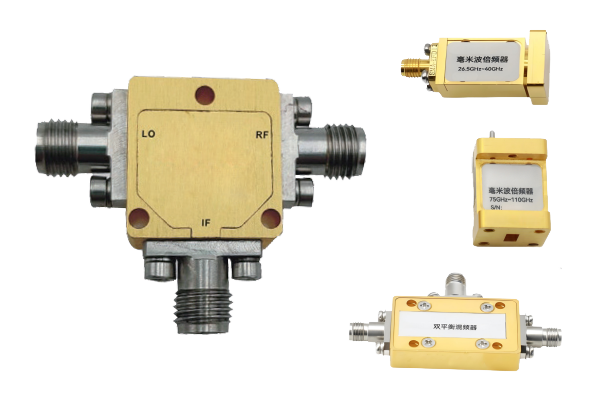
Pin diode devices are now regarded as essential parts in high-frequency circuitry given their inherent performance characteristics Their rapid transition between on and off states together with minimal capacitance and low insertion loss suits them for switching modulation and attenuation roles. The main mechanism of PIN diode switching uses bias voltages to regulate copyright flow through the device. The applied voltage modifies the depletion layer thickness at the p–n interface thus affecting conductivity. Controlling the bias point makes it possible for PIN diodes to switch at microwave frequencies with low distortion
For applications demanding exact timing and control PIN diodes are typically incorporated into complex circuitry They are implemented in RF filtering schemes to enable selective frequency band passage or blockage. Moreover their high-power handling capability renders them suitable for use in amplification division and signal generation stages. Reduced size and improved efficiency of PIN diodes have enhanced their applicability in wireless and radar engineering
Evaluating Coaxial Switch Design and Functionality
Creating coaxial switches is a challenging task that demands consideration of a variety of technical parameters Key factors such as switch category operating band and insertion loss shape the coaxial switch performance. Optimal coaxial switches balance reduced insertion loss with enhanced isolation between connections
Performance analysis requires evaluating key metrics such as return loss insertion loss and isolation. These metrics are commonly measured using simulations theoretical models and experimental setups. Precise performance analysis is essential for guaranteeing dependable coaxial switch function in applications
- Engineers use simulation software analytical calculations and experimental methods to evaluate coaxial switches
- The behavior of a coaxial switch can be heavily influenced by temperature impedance mismatch and manufacturing tolerances
- Recent innovations and trends in coaxial switch design prioritize better metrics together with reduced size and lower power draw
Low Noise Amplifier LNA Design Optimization
Optimization of LNA gain efficiency and overall performance is critical to achieve excellent signal preservation Achieving results demands careful transistor picks optimized bias settings and considered topology design. Effective LNA designs minimize internal noise and maximize clean signal gain with little distortion. Simulation and modeling techniques are essential for analyzing the noise consequences of design options. Striving for a minimal Noise Figure assesses success in retaining signal power while limiting noise contribution
- Prioritizing low-noise transistors is crucial for optimal LNA performance
- Correctly applied bias conditions that are optimal and suitable are vital for low noise
- Circuit layout and topology have substantial impact on noise characteristics
Tactics like impedance matching noise mitigation and feedback regulation advance LNA performance
Wireless Path Selection via PIN Switches

PIN diode switch networks offer flexible and efficient means to route RF energy in many systems They can be switched very fast to allow flexible dynamic routing of RF signals. Low insertion loss combined with excellent isolation is a primary advantage that reduces signal degradation. They are applied in antenna selection circuits duplexers and phased array antenna systems
Control voltages alter the diode resistance which in turn dictates switching operation. In its open state the diode’s resistance is high enough to stop signal flow. Introducing a positive control voltage reduces resistance and opens the RF path
- Further advantages include fast switching low power requirements and compact design of PIN diode switches
Different architectures and configurations of PIN diode switch networks enable complex routing capabilities. Arranging multiple switches in networked matrices enables flexible routing and dynamic configuration
Performance Assessment for Coaxial Microwave Switches

Evaluation and testing of coaxial microwave switches is vital for verifying correct operation in electronic networks. Multiple determinants including insertion reflection transmission loss isolation switching speed and operating bandwidth shape performance. An exhaustive evaluation procedure measures these parameters across varied operating environmental and test conditions
- Moreover additionally furthermore the evaluation ought to include reliability robustness durability and environmental tolerance considerations
- Ultimately comprehensive evaluation outputs provide critical valuable and essential guidance for switch selection design and optimization for targeted uses
Minimizing Noise in LNA Circuits A Comprehensive Review
Low noise amplifier circuits are essential components in many wireless radio frequency and RF communication systems because they amplify weak signals while limiting added noise. The paper provides a comprehensive examination analysis and overview of techniques aimed at lowering noise in LNAs. We examine investigate and discuss the fundamental noise sources including thermal shot and flicker noise. We also cover noise matching feedback network techniques and ideal bias strategies to mitigate noise. It showcases recent advancements such as emerging semiconductor materials and creative circuit concepts that reduce noise figures. Offering a thorough understanding of noise mitigation principles and methods the review helps designers and engineers build high performance RF systems
Rapid Switching System Uses for PIN Diodes

PIN diodes display exceptional unique and remarkable characteristics making them suitable for high speed switching Low parasitic capacitance and small resistance enable quick switching to handle precise timing requirements. Also PIN diodes respond proportionally to voltage which allows controlled amplitude modulation and switching actions. Versatility flexibility and adaptability enable their suitable applicable and appropriate deployment in many high speed applications Use cases cover optical communications microwave circuitry and signal processing devices and equipment
Integrated Coaxial Switch and Circuit Switching Solutions
Integrated coaxial switch circuits offer advancement in signal routing processing and handling across electronic systems circuits and devices. These specialty ICs are engineered to control manage and direct signal flow through coaxial cables offering high frequency performance and low latency propagation insertion times. IC driven miniaturization allows compact efficient reliable and robust designs tailored to dense interfacing integration and connectivity requirements
- With careful meticulous and rigorous deployment of these approaches developers can accomplish LNAs with outstanding noise performance enabling trustworthy sensitive electronics By meticulously carefully and rigorously adopting these practices designers can deliver LNAs with excellent noise performance supporting reliable sensitive systems By meticulously carefully and rigorously adopting these practices designers can deliver LNAs with excellent noise performance supporting reliable sensitive systems Through careful meticulous and rigorous implementation of these approaches engineers can low-noise amplifier achieve LNAs with exceptional noise performance supporting sensitive reliable systems
- Applications of IC coaxial switch technology span telecommunications data communications and wireless networks
- Aerospace defense and industrial automation represent important application areas
- IC coaxial switching finds roles in consumer electronics audio visual equipment and test and measurement tools
mmWave LNA Design Considerations and Tradeoffs

LNA engineering for mmWave bands involves dealing with increased attenuation and heightened noise impacts. Parasitic capacitances and inductances become major factors at mmWave demanding careful layout and parts selection. Minimizing input mismatch and maximizing power gain are critical essential and important for LNA operation in mmWave systems. Devices such as HEMTs GaAs MESFETs and InP HBTs are important selections to meet low noise figure goals at mmWave. Moreover additionally furthermore the development implementation and tuning of matching networks plays a vital role in ensuring efficient power transfer and impedance match. Attention to package parasitics is crucial as they have potential to harm mmWave LNA performance. Adopting low loss transmission media and careful ground plane strategies is essential necessary and important to cut reflections and retain bandwidth
Modeling Strategies for PIN Diode RF Switching
PIN diodes perform as significant components elements and parts across various RF switching applications. Comprehensive accurate and precise characterization of these devices is essential to enable design development and optimization of reliable high performance circuits. The work involves analyzing evaluating and examining electrical characteristics like voltage current resistance impedance and conductance. Also measured are frequency response bandwidth tuning abilities and switching speed latency or response time
Additionally the development of accurate models simulations and representations for PIN diodes is vital essential and crucial for predicting their behavior in RF systems. Different numerous and various modeling strategies are available including lumped element distributed element and SPICE models. Model selection is guided by specific application requirements and the desired required expected accuracy
Advanced Cutting Edge Sophisticated Techniques for Low Noise Quiet Minimal Noise Amplifier Design
Engineering LNAs demands careful topology and component decisions to achieve superior noise performance. Novel and emerging semiconductor progress supports innovative groundbreaking sophisticated approaches to design that reduce noise significantly.
Key techniques include employing utilizing and implementing wideband matching networks incorporating low noise high gain transistors and optimizing biasing schemes strategies and approaches. Additionally advanced packaging and thermal management practices are critical for minimizing external noise influences. By carefully meticulously and rigorously applying these approaches designers can realize LNAs with outstanding noise performance enabling sensitive reliable electronic systems
